The Cost of Crop Insurance

“Crop insurance premiums are going to be substantially higher this year,” said Jim Mintert, a Purdue University Agricultural Economist. “There’s really two big factors driving those premiums up. One is the dollars of revenue that you’re covering, and as the dollars of coverage goes up, those premiums go up. The second factor is volatility. Prices this year in February were more volatile than they were in February a year ago, so those two factors are driving premiums up.”
That is why Mintert, and fellow Purdue University Agricultural Economist Michael Langemeier, urged farmers to think carefully about their crop insurance decisions. Langemeier said farmers should be prepared for some “sticker shock” when they make their crop insurance selections this year.
However, there is good news regarding crop prices and government payments in 2020, as they were quite strong. Grain farm also tallied robust incomes. It was the first time in many years that net returns to land met or exceeded cash rental rates. This is likely to happen again in 2021, Langemeier said in a recent webinar.

Crop Insurance Projected Prices
These crop insurance projected prices were calculated in February of 2021:
Corn – $4.58
Soybeans – $11.87
These Projected Prices are higher than the past few years.
Corn
2021 – $4.58
2020 – $3.88
2019 – $4.00
2018 – $3.96
Soybeans
2021 – $11.87
2020 – $9.17
2019 – $9.54
2018 – $10.16
Higher Projected Prices means more revenue coverage in 2021.
For a 200 bushel APH corn farmer, 85% Revenue Protection means $119 more coverage per acre in 2021 compared to 2020.
For a 55 bushel APH soybean farmer, 85% Revenue Protection means $127 more coverage per acre in 2021 compared to 2020.
Click here for a quick and easy cost estimator!
General Advice for Farmers:
Langemeier and Mintert offered the following advice to farmers –
Revenue Projection: Put much of your focus on revenue projection. While there are several types of yield protection products, revenue projection protects against a reduction in prices as well as yields. In the past few years, farmers have been inclined to buy higher levels of coverage, although it differs regionally.
“Even though premiums are higher this year, we do not recommend that you reduce coverage this year to try and save on premium,” Langemeier said. “I think there’s enough downside risks this year, and you will want that protection that you get with the coverage level you’ve been using in the past.”
Harvest Prices: Harvest prices matter. Several years ago, the Risk Management Agency modified the rules regarding harvest prices. Rather than having to opt-in to have harvest prices considered in coverage, farmers now have to opt-out. Basically, revenue calculations will be issued based on whichever is higher – the average price during February or the average price during October.
Langemeirer suggests buying revenue protection with the harvest price exclusion is not worth the lower premium. “The projected price versus the harvest price is extremely powerful. If the harvest price increases, you get a higher revenue guarantee as you’re protecting those more expensive bushels,” he said. When harvest prices are higher, it tends to be by a sizeable margin.
Consider what type of unit you purchase carefully: Enterprise units, which combine all basic units of one crop in one county together, are typically the most affordable because they are subsidized at approximately 80 percent. Optional or basic units will be more expensive, however they are more likely to pay overtime. They could be a good option for farms located within a county that has considerable variation in yield potential.
Supplemental Products: Supplemental products are not for everyone. However, they can be useful. Farmers have two choices, the Supplemental Coverage Option (SCO) and the Enhanced Coverage Option (ECO). ECO is new this year, and delivers an extremely high level of coverage, from your choice of 95 percent or 90 percent to as low as 86 percent.
Both coverage products pay out based on county-level guarantees, which poses challenges when it comes to having a clear understanding of the type of coverage you have. Mintert and Langemeier are opposed to lowering your revenue protection if you are thinking about buying these products.
“It’s certainly not a no-brainer on whether it’s worth it,” said Mintert. “This is something for individual farms to look carefully at to determine if the additional revenue guarantee is worth the additional premium.”
Farms that have yield histories that closely monitor their county averages may very well have an easier time assessing ECO. What’s more, Langemeier said that farms that have tight working capital and cannot afford a small loss should consider ECO.
To learn more about how Graybeal Group Inc. can assist with your crop insurance needs, click here!
Graybeal Group, Inc. Offers The Widest Range of Products and Pricing
Graybeal Group, Inc. is a professional Insurance company with licensed agents and staff. With over three decades of experience, The Graybeal Group takes pride that our agents are specialized in the needs of our customers in the areas of Crop/Agriculture, Hemp, Non-Profits, Pasture Rangeland, and Forage, and Farm & Ranch.
Being able to provide the time for our agents to focus on their specialty allows us to give you – our clients – the needed coverage for your home and business. At Graybeal Group, Inc., we are committed to providing an experience that empowers our clients so they are educated on their coverage and the value we provide above all others.
For more information, we invite you to call Graybeal Group, Inc. at (541) 567-5523.
